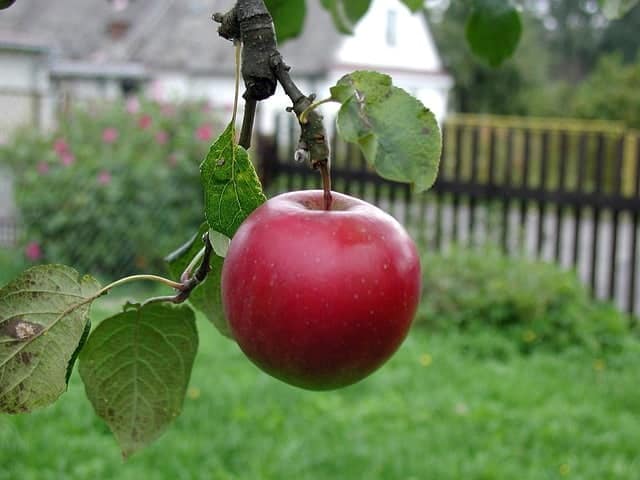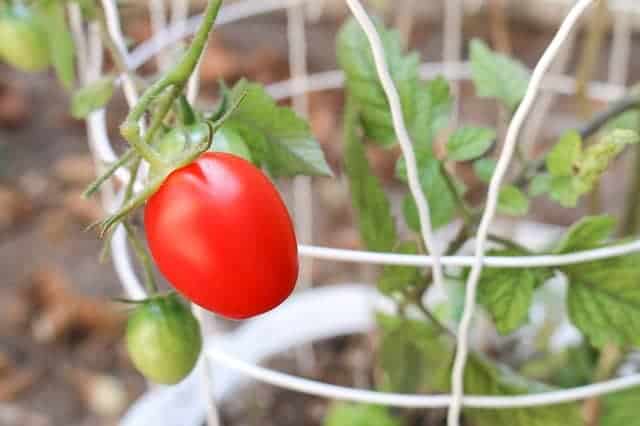Want to learn how have a bounty of homegrown food all year round? In the book Homegrown by Marta Teegen you learn how to swap your annuals for edibles. She will also teach you how to create attractive beds and containers that both beautify the yard and provide a bounty of fresh produce.
Title: Homegrown
Subtitle: A growing guide for created a cooks garden in raised beds, containers, and small spaces
Author: Marta Teegen
ISBN: 978-1605295176
Publisher: Rodale Publishing
Genre: Gardening
Pages: 192 pages (paperback)
About Homegrown by Marta Teegen:
Swap your annuals for edibles and create attractive beds and containers that both beautify the yard and provide a bounty of fresh produce. As a trained chef turned professional
kitchen garden designer, Marta Teegen knows what a difference freshly harvested vegetables can make to a meal-and how easy it is to have seasonal vegetables available at the peak of freshness.
She touts the joys of creating front yard friendly raised bed gardens and container gardens that take up only a small amount of space and her cuisine based focus means you first ask yourself what you like to eat, then you plant and grow what you love.
Homegrown Food IS Possible!
I really liked the entire concept of this book because I live in suburbia. A lot of the gardening books that I have read assume that I have a 1/4 acre that I can dedicate to homegrown food. I have a total of 1/2 an acre (including the house) which the people before us landscaped quite nicely with useless shrubbery. They paid a lot of money every month to have someone maintain this useless shrubbery, too.
I, myself, would rather put in a 2 foot by 2 foot raised bed and plant a few
edible herbs in it than maintain a shrub that isn’t going to provide me anything in return for my hard work. Slowly, I am doing away with the plants I DON’T like and replacing them with small raised beds in which I can plant lettuce (in a shady spot), eggplant, tomatoes, etc. I want homegrown food, not a bill from a landscaper.
Growing Food in the Suburbs
This books covers all the issues that you need to be concerned with in order to turn your suburban lot (or condo, or even apartment patio!) into a productive kitchen garden. The author covers garden location, the types of raised beds or containers you will use, and the kind of soil you will need for intensive and small space gardening. There are also tips for choosing your plants, maintenance, controlling pests, and off season care of your garden. The last chapter is a collection of recipes to inspire you to use what you grow.
More Posts About Growing Your Own Food
One interesting thing I learned in this book: I did not realize that in a smaller area you can pack the plants in closer than recommended if you use the right organization and type of soil. (Check out my post about
square foot gardening for more info on this.)
I always assumed that the spacing recommendations on the back of the seed package were requirements. The author suggests that with extremely fertile soil and proper plant placement (tall plants in the center, short on the outside, etc) your garden will grow fine in a slightly crowded area. Whether this actually works, I don’t know yet. I guess I will find out next spring! I hope to get my garden beds to increase their yield of homegrown food with this technique!
Make a Garden Journal
Another thing the author recommends, is to figure out what it is that you want to grow. What do you actually USE in your kitchen? If you do not plan to make homemade tomato sauce, do not plant 15 tomato plants! Use your space wisely and fill it with ingredients that you use on a daily basis.
At first, I was a little unsure of the recipes in the last chapter. The names sounded very exotic. Things like Basmati Rice with Spices, Pistachios and Calendula or
Roasted Chicken Salad with Celery, Herbs and Croutons. Once I started actually reading through the recipes, though, I realized they were really rather simple. The names may sound complicated but the recipes are really not! They mostly contain only a handful of ingredients. I look forward to trying them!
I really liked this book and I think it will come in very handy in the spring when planning next year’s garden!
Diane is a professional blogger and nationally certified pharmacy technician at Good Pill Pharmacy. She earned her BS in Microbiology at the University of New Hampshire and has worked in cancer research, academics, and biotechnology. Concern over the growing incidence of human disease and the birth of her children led her to begin living a more natural life. She quickly realized that the information she was learning along the way could be beneficial to many others and started blogging and freelance writing to share this knowledge with others. Learn more about her HERE.






